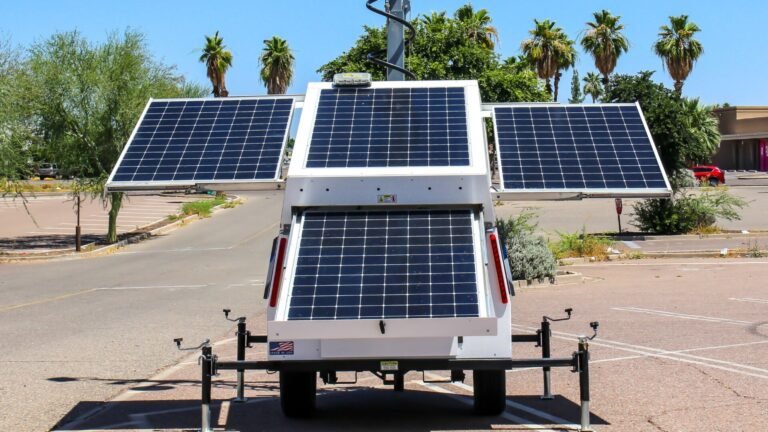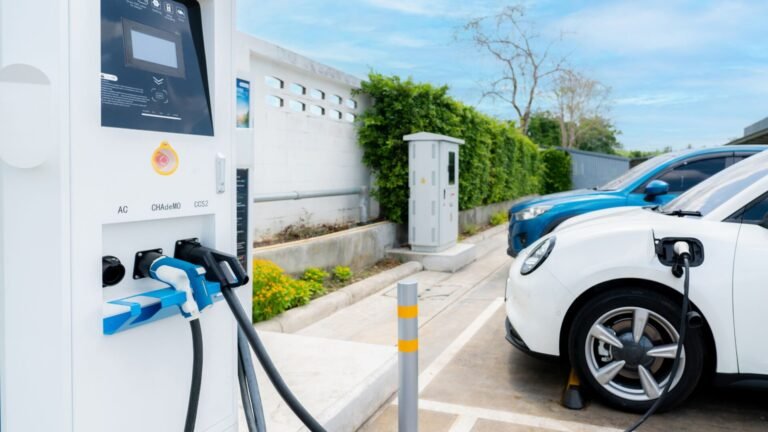The rise of sustainable architecture has led to the development of numerous solar-powered buildings in Europe, showcasing innovative design and cutting-edge technology.
These structures not only minimize environmental impact but also enhance energy efficiency, leading the way in green building trends. In this article, we will explore the top 10 solar-powered smart buildings in Europe, highlighting their unique features and contributions to sustainable living.
1. The Edge, Amsterdam, Netherlands
The Edge in Amsterdam is often regarded as the most sustainable office building in the world. This solar-powered smart building uses a combination of renewable energy sources, including solar panels that cover the entire roof and the southern façade.
The building is equipped with smart technology that optimizes energy use, lighting, and climate control based on occupancy and external conditions. The Edge sets a high standard for solar-powered buildings in Europe.
2. One Angel Square, Manchester, UK
One Angel Square is another exemplar of sustainable architecture. This building is powered by a mix of renewable energy sources, with a significant portion coming from solar panels. It incorporates energy-efficient systems that reduce energy consumption and greenhouse gas emissions.
The building’s smart technology includes a sophisticated energy management system that monitors and adjusts energy use in real-time, making it one of the leading solar-powered buildings in Europe.
3. Bosco Verticale, Milan, Italy
Bosco Verticale, or the Vertical Forest, is a pair of residential towers in Milan that combine sustainability with stunning design.
These buildings are adorned with over 20,000 plants and trees, which contribute to air purification and thermal regulation. Solar panels are integrated into the design, providing renewable energy to power the building’s systems.
The smart technology used in Bosco Verticale ensures efficient energy use and environmental sustainability.
4. Elbphilharmonie, Hamburg, Germany
The Elbphilharmonie in Hamburg is not only an architectural marvel but also a pioneer in sustainable energy use.
This concert hall features solar panels on its roof, generating a significant portion of its energy needs. The building’s smart technology optimizes lighting, heating, and cooling systems to reduce energy consumption.
The Elbphilharmonie stands out as one of the most iconic solar-powered buildings in Europe.
5. The Crystal, London, UK
The Crystal is a landmark building in London dedicated to sustainability and urban development. It is powered entirely by renewable energy, with solar panels playing a crucial role in its energy generation.
The building features advanced smart technology that manages energy use, water consumption, and indoor climate. The Crystal serves as a model for future solar-powered buildings in Europe.
6. Copenhagen International School, Copenhagen, Denmark
Copenhagen International School boasts one of the largest building-integrated solar power systems in Europe.
The façade is covered with over 12,000 solar panels, which generate more than half of the school’s electricity needs.
The building’s smart technology includes energy-efficient systems and real-time monitoring to optimize energy use. This school is a shining example of how solar-powered buildings in Europe can contribute to educational environments.
7. Torre Sevilla, Seville, Spain
Torre Sevilla is the tallest building in Andalusia and a testament to sustainable architecture. The building utilizes solar panels to generate renewable energy, complemented by smart technology that enhances energy efficiency.
Torre Sevilla’s design incorporates natural ventilation and shading systems to reduce the need for artificial cooling, making it one of the top solar-powered buildings in Europe.
8. KfW Westarkade, Frankfurt, Germany
KfW Westarkade in Frankfurt is renowned for its energy-efficient design and use of renewable energy sources.
Solar panels on the roof and façade contribute to the building’s power supply. The smart technology integrated into KfW Westarkade includes an advanced energy management system that optimizes heating, cooling, and lighting.
This building exemplifies the potential of solar-powered buildings in Europe to achieve high energy performance standards.
9. Powerhouse Brattørkaia, Trondheim, Norway
Powerhouse Brattørkaia is a state-of-the-art office building that produces more energy than it consumes. Solar panels on the roof and façade generate renewable energy, while the building’s smart technology ensures efficient energy use and storage.
This positive energy building sets a new benchmark for solar-powered buildings in Europe, demonstrating the feasibility of net-zero energy consumption in commercial properties.
10. Atrium Ljungberg, Stockholm, Sweden
Atrium Ljungberg in Stockholm is a mixed-use development that prioritizes sustainability and energy efficiency.
The building features solar panels that supply renewable energy, reducing its reliance on non-renewable sources. Smart technology is used to monitor and manage energy consumption, indoor climate, and lighting.
Atrium Ljungberg is a leading example of how solar-powered buildings in Europe can integrate sustainability into urban living.
Conclusion
The top 10 solar-powered smart buildings in Europe showcase the remarkable advancements in sustainable architecture and renewable energy use.
These buildings not only reduce environmental impact but also set new standards for energy efficiency and smart technology integration.
By harnessing the power of the sun, these structures exemplify the future of green building and inspire further innovation in the field of sustainable construction.
As the demand for environmentally friendly buildings continues to grow, the examples highlighted in this article serve as benchmarks for future developments.
The integration of solar power and smart technology in these buildings demonstrates the potential to create a more sustainable and energy-efficient built environment.
By prioritizing renewable energy sources and intelligent design, Europe is leading the way in the global transition towards greener and smarter cities.
In summary, the increasing number of solar-powered buildings in Europe reflects a broader commitment to sustainability and energy efficiency.
These top 10 buildings not only contribute to reducing carbon footprints but also inspire others to adopt similar practices.
As technology continues to evolve, we can expect to see even more innovative and sustainable buildings shaping the skylines of Europe and beyond.






